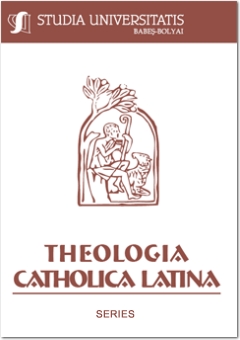THE RELATIONSHIP BETWEEN ADULT ATTACHMENT AND RELIGIOUS DOUBTS
THE RELATIONSHIP BETWEEN ADULT ATTACHMENT AND RELIGIOUS DOUBTS
Author(s): Anikó Kézdy, Tamás Martos, Szabolcs UrbánSubject(s): Christian Theology and Religion
Published by: Studia Universitatis Babes-Bolyai
Keywords: adult attachment; religious doubts; correspondence and compensation hypothesis.
Summary/Abstract: The purpose of the study was to explore the relationship between religious doubting and adult attachment style. We aimed at finding out which of the hypotheses explaining the relationship between attachment and religiosity (correspondence and compensation hypotheses) is supported by our data in the case of religious doubting. 712 Hungarian adults participated in the study. Adult attachment was assessed by the Attachment Style Questionnaire , and for measuring religious doubting the Religious Doubt Scale was used. Results showed that, from the ASQ scales, “discomfort with closeness” and “preoccupation with relationships” correlated positively with religious doubts. The relationship was stronger between doubts and “preoccupation with relationships” in the case of women, and “discomfort with closeness” in the case of men, suggesting that there are gender differences in the nature of doubting. On the basis of the cluster analysis performed on the five scales of ASQ, we identified three clusters that could be regarded as equivalent to the secure, avoidant, and anxious-ambivalent attachment styles described in Hazan and Shaver’s model . Individuals in the cluster corresponding to secure attachment scored significantly lower on the religious doubts scale than individuals in the two other clusters. Our study showed that insecure attachment is linked with stronger doubting; this result supports the correspondence hypothesis. However, secure attachment was not related to lower levels of doubting. This might suggest that, in the case of securely attached individuals, religious doubting can be interpreted as a kind of religious explorative behaviour (after Bowlby’s theory ), that is made possible by the experience of the secure base. Further studies are needed to test this assumption.
Journal: Studia Universitatis Babes-Bolyai - Theologia Catholica Latina
- Issue Year: 2011
- Issue No: 2
- Page Range: 95-118
- Page Count: 24
- Language: English

